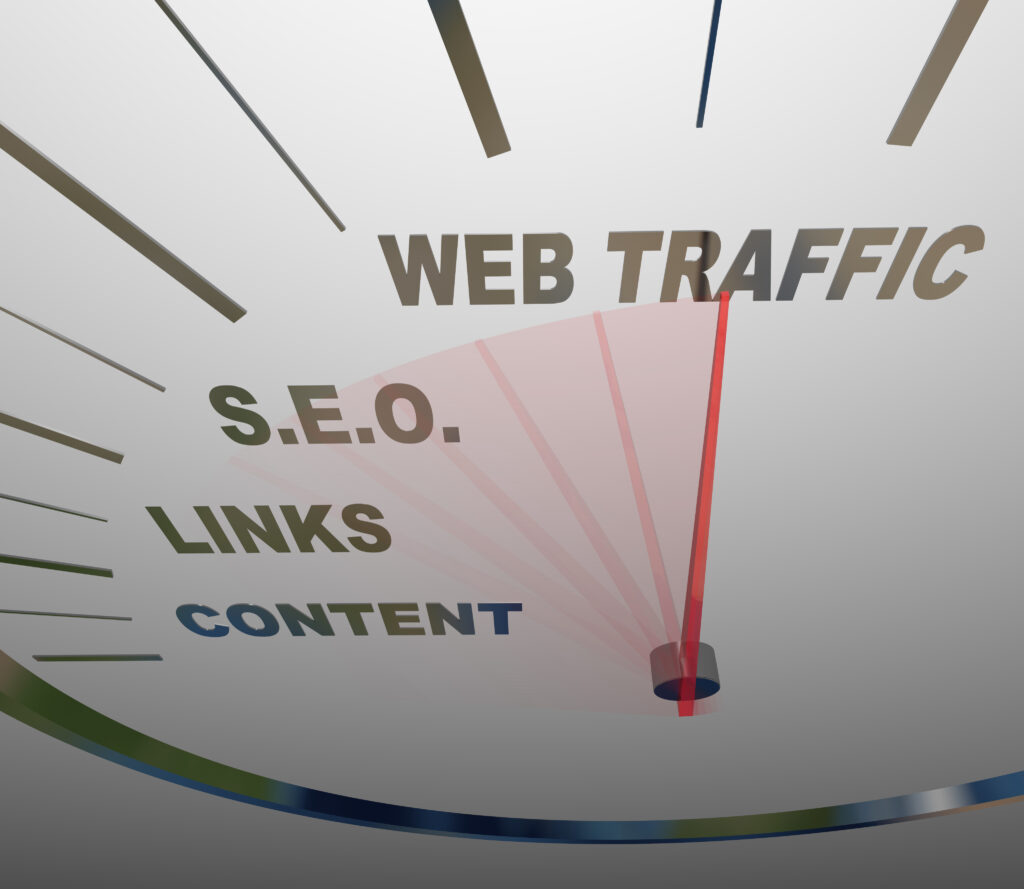Wondering how to increase your eCommerce sales? Check out our blog for beginner-friendly tips on eCommerce SEO. From increasing traffic to your site, to improving your product listings, we’ve got you covered! SEO tips to boost online sales! Implementing these tips will help you see a real difference in your online sales. So what are you waiting for? Sign up today and get a free consultation from our team of experts! We’ll show you how ePropel can help take your business to the next level. As the world of online shopping continues to grow, it’s more important than ever for eCommerce businesses to have a solid SEO strategy in place. After all, without good SEO practices, your website may never be seen by potential customers. And while there’s no magic formula for guaranteed success, there are definitely some things you can do to give your eCommerce website a boost in search engine rankings. Here are just a few tips to get you started: Become an SEO rockstar with these SEO ecommerce tips and tricks! 1. Use keyword-rich titles and descriptions When it comes to search engine optimization, one of the most important things you can do is to use keywords throughout your website’s title and description tags. This helps Google understand what your website is all about, and can result in higher rankings for relevant search queries. 2. Optimize your product pages Make sure your product pages are optimized for both search engines and potential customers. This means including relevant keywords in the title and description, as well as high-quality product photos and videos. 3. Promote your website on social media Social media can be a great way to promote your eCommerce website and improve your SEO at the same time. By sharing links to your website’s products and content on social networking sites like Facebook and Twitter, you can help increase traffic to your site while also building up valuable backlinks. 4. Link Building As we mentioned before, one of the best ways to get inbound links to your site is through your content. This can have a positive impact on your e-commerce website’s search engine ranking. Google takes both content and links into account when determining rankings, but it’s important to remember that quality is more important than quantity when it comes to link building. This means that your inbound links should come from relevant and authoritative websites or sources. 5. Use schema markup Schema markup is a code that you can add to your website to help search engines understand your content better. By adding schema markup to your product pages, you can make it more likely that your products will appear in rich snippets, which can attract more click-throughs from the search results. 6. Beat the Competition Before you invest a lot of time and effort into building your e-commerce SEO strategy, it’s a good idea to check out what your competitors are doing. There are SEO tools like SEMrush, Ahrefs, Page Optimizer Pro, etc. that can help you see which keywords your competitors are ranking for and where their backlinks come from. This research will give you a better understanding of the landscape and help you determine which techniques are worth pursuing. 7. Make a great website structure The architecture of your website determines how your content is organized and presented to users and search engines. URL structures, navigation menus, categorization, breadcrumbs, and internal linking are all examples of this. A good website architecture allows users to easily navigate between pages while also allowing search engines to crawl your content and understand what your site is about. Consider how your website’s pages relate to one another, specifically how they branch off your homepage and are organized into deeper directories. Consider your URL structures, navigation menus, categorization, breadcrumbs, and internal linking when designing a website architecture. This will help make it easy for users to navigate your site and for search engines to crawl and understand your content 8. Monitor website performance When it comes to e-commerce, there are three things you should always keep in mind: site speed, status code errors, and site security. Site speed is important because it can impact your bounce rate. And when a website has a high bounce rate, it can be challenging to rank for your target keywords. Status code errors should be checked from time to time to see if your website has 404 pages or is making improper redirects. That way, you can fix them immediately and not waste link equity. Web security is something that search engines, like Google, value. So for e-commerce websites, it’s important to install an SSL certificate. By keeping these things in mind, you can make sure your e-commerce website is always in tip-top shape. 9. Be Mobile Responsive More than 30% of eCommerce sales in 2017 came from mobile devices. By 2021, that number could reach 54%. Your mobile site should load quickly. Second, mobile and desktop users should have the same great user experience. Google indexes your mobile website, so your online store must be mobile-friendly. Ecommerce businesses stand to gain a lot from the application of some SEO best practices. It raises user engagement and brand recognition on search engine results pages. However, if you asked an SEO service provider like ours, we’d tell you that the advantages extend far beyond just boosting your impressions and clickthrough rates. In the end, with the proper techniques, you can progress to online leadership. But in addition to the methods already discussed, SEO may also assist your business to migrate to an online growth rate that is constant and sustainable through: Attracting New Clients. Ecommerce sales made for 18.1% of all retail sales globally in 2021. You now have access to more than 1.4 billion prospective customers. E-commerce SEO offers your company a huge opportunity to expand. Setting up your company for globalization. For your firm to expand, brand recognition is essential. You may communicate with and conduct business with people and businesses all around the world by incorporating SEO into your online marketing initiatives, which will increase your chances of success. Eventually, achieve sustainable and natural effects. By using listings that closely match a user’s search query or intent, e-commerce SEO enables your company/website to reach more users in search engine results. Ecommerce merely makes it easier for your company and clients to conduct transactions as a business-to-consumer marketing strategy. However, like with any sales channel, marketing initiatives are required to increase the conversion rate. In the case of e-commerce, this involves the usage of SEO. 1. Conduct keyword research on Google. The first step in any SEO plan must be to undertake keyword research. A buying intent or purchase intent refers to the likelihood that a buyer will buy the goods or use the service. This involves classifying keywords based on buyer intent. It is related to the typical cost per click of a specific keyword that you discovered during your Google keyword research. The standards for doing keyword research fall into three categories: – Search Volume – Intent – Relevant Competition Long-tail keywords are phrases made up of three or four keywords that specifically define a given commodity or service being offered. When a buyer enters a very specific search term, it indicates that they have a certain product in mind that they want to purchase. Long-tail marketing frequently boosts sales conversion. Generic keywords are used during general searches to attract customers that merely require information to make a decision, as opposed to long-tail keywords. 2. Creating high-quality content. Use the keywords you acquired from your keyword research by creating content that is really relevant. They must be positioned on the landing page of the material and mapped in accordance with the landing page. Do keep in mind that it must also be based on the purchase cycle. Creating high-quality content is essential when learning how to perform SEO on an e-commerce website. Photo credit: Pixabay via Pexels. Creating material that is relevant to customers is essential. It needs to include the following: 3. Optimizing on-page SEO. For your site to go in the search results, your URL must contain the term and be short. The keyword must also be in your content’s title tag or H1 tag and should be positioned at the start. The keyword must be in the meta description because Google emphasizes it in the search results. Rich snippets are especially crucial for SEO in e-commerce because they have a greater click-through rate. Each snippet with a high CTR results in more traffic being sent to your website. Google will start to recognize your snippet more as more people click through it, which will boost your ranks. You must add structured data or schema to your site in order to receive rich snippets. eCommerce SEO is the process of optimizing an online store for search engines. This can include optimizing the website architecture, product pages, category pages, and blog content to make it more visible and accessible to search engines. By doing this, eCommerce businesses can improve their organic traffic and visibility, resulting in more sales and revenue. 1. Build brand awareness through non-branded keywords 2. Target the entire conversion funnel with SEO 3. Don’t forget about long-tail keywords 4. Capitalize on what’s popular using Google Trends 5. Meet your buyers where they’re at 6. Retarget organic traffic with paid ads 7. Add a copy to eCommerce product category pages 8. Implement faceted navigation correctly 9. Use internal linking strategically 10. Add structured data 11. Improve the customer experience 12. Improve page load time 13. Create a faster checkout process 14. Give incentives for online reviews 15. Encourage user-generated content 16. Collaborate with influencers 17. Use A/B testing and behavioral marketing 18. Get creative with eCommerce content marketing By following these tips, you can increase your eCommerce sales through Search Engine Optimization. By optimizing your website for the search engines and promoting your website through various online channels, you can attract more visitors to your site who are looking to purchase what you have to offer. Product pages are often one of the most important pages on an eCommerce website, yet they are also one of the most commonly overlooked when it comes to optimization. By optimizing your product pages for both conversions and SEO, you can ensure that your products are not only being seen by potential customers but that they are also being purchased. Tips to optimize product pages for conversions! There are a few key elements that should be included on every product page in order to optimize it for conversions and SEO: 1. A clear and concise product title The first thing that potential customers will see when they land on your product page is the title, so it’s important to make sure that it is clear and concise. A good product title should be no more than 70 characters long and include relevant keywords for the product. 2. Keyword-rich product descriptions Product descriptions are important for two main reasons: they help potential customers learn more about the product and they help search engines understand what the product is about. When writing your product descriptions, be sure to include relevant keywords and make use of rich media such as images, videos, and infographics. 3. High-quality product images Images are essential for any product page because they provide potential customers with a visual representation of the product. In order to optimize your images for SEO, be sure to include relevant keywords in the file name and alt text. 4. Customer reviews and testimonials Customer reviews and testimonials are important because they help to build trust and confidence in your product. Be sure to include customer reviews on your product pages and encourage customers to leave feedback after making a purchase. 5. A strong call-to-action A strong call-to-action is essential for any product page because it helps to encourage potential customers to make a purchase. Your call-to-action should be clear, concise, and include a sense of urgency. By following these tips, you can optimize your product pages for both conversions and SEO. By doing so, you’ll be able to ensure that your products are being seen by potential customers and that they are being purchased. Content marketing is a strategic marketing approach that focuses on developing and distributing valuable, relevant, and consistent content in order to attract and retain a specific audience — and, ultimately, to drive profitable customer action. Content Marketing is still the key to boost organic ranking. In other words, content marketing is all about creating interesting or informative content for your target audience. This can include blog posts, e-books, infographics, guides, white papers, case studies, how-to articles, and even videos. Content marketing’s primary goal is to attract and retain customers by providing them with valuable and relevant information. You’ll also establish yourself as a thought leader in your industry by regularly publishing this type of content, which can help you attract even more customers. Content marketing is not a one-time event; it is a continuous process that necessitates commitment and dedication. However, if you persevere, the rewards can be great. When it comes to eCommerce SEO, there are a few things you should definitely do in order to ensure that your store is visible on search engine results pages and a few things you should avoid doing at all costs. Here are the Dos and Don’ts of eCommerce SEO: When it comes to optimization, one of the most important things you can do is to use keyword-rich titles and descriptions. This will help your store show up in results when people search for those keywords. Another important thing to do is to create unique content. This means that your content should be original and not copied from another source. Not only is this bad for SEO, but it can also get you into legal trouble. Social media is a great way to promote your store and reach a wider audience. Make sure to post regularly and interact with your followers. When you have images on your site, be sure to use alt tags. This is important for SEO and accessibility purposes. Linking to other websites, especially high-quality ones, can help improve your own website’s ranking. Just be sure to only link to websites that are relevant to your own. One of the worst things you can do is to stuff keywords into your titles and descriptions. Not only does this look unnatural, but it will also get you penalized by Google. Buying links is another big no-no. This is because it goes against Google’s guidelines and it can get your website penalized. As mentioned before, using duplicate content is a bad idea for several reasons. Not only will it hurt your SEO, but it can also get you into legal trouble. There are a lot of so-called “black hat” SEO techniques out there that you should avoid at all costs. These include things like keyword stuffing and link buying, as mentioned before. When it comes to SEO, it’s important to take things slow and steady. Trying to do too much at once is a surefire way to get yourself penalized by Google. So start with the basics and then slowly add more advanced techniques as you go. By following these Dos and Don’ts, you can help ensure that your eCommerce store is optimized for search engines and that you avoid any penalties that could hurt your business. Yes, our site has faceted navigation. This allows visitors to easily browse and filter products by different criteria. This makes it easy to find the right product for your needs. There is no definitive answer to this question since it can vary depending on the particular situation and implementation. However, some potentially negative impacts of faceted navigation include: -Making it more difficult for users to find what they are looking for if the organization of the facets is not well thought out-Increased complexity and overhead in terms of development and maintenance -Generating a large amount of data that can be difficult to sift through general, it is important to carefully consider whether faceted navigation will be helpful or harmful in a given situation before implementing it. Yes, our SEO strategy generates qualified leads. We use a variety of methods to generate leads, including targeted keywords, backlinking, and social media outreach. We make sure that our leads are high-quality and interested in our products or services before we contact them. This ensures that we waste time on unqualified leads. There are a number of factors that affect whether or not site traffic converts. The most important factor is the quality of traffic. If you’re getting lots of high-quality, targeted traffic to your site, then you’re more likely to see conversions. Other important factors include the offer on your site (is it something that people actually want?), the design of your site (is it easy to use and navigate?), and the overall user experience. If you’re working on improving these factors, then you should see an increase in conversions. Consider too the traffic potential, quality traffic, qualified traffic, relevant traffic, and additional site traffic. There is no one-size-fits-all answer to this question, as the cost-effectiveness of an SEO strategy depends on a number of factors, including the size and scope of your business, your budget, and your goals. However, there are some general tips that can help you make your Ecommerce SEO strategy more cost-effective: Set realistic goals. Don’t expect to achieve top rankings for all of your keywords overnight. SEO is a long-term strategy, and it takes some period of time and effort to see results. Do your research. Before you start implementing any SEO tactics, make sure you do your research and understand what will work best for your business. Prioritize your efforts. Don’t try to do everything at once. Start with the most important and impactful SEO tactics and then move on to other things. Focus on your core business. Don’t get distracted by shiny objects or side projects. Stick to what you do best and leave the rest to others. Be patient. As we said, SEO is a long-term strategy. Don’t get discouraged if you don’t see results immediately. Just keep working at it and you will eventually see the fruits of your labor. If you follow these tips, you should be able to make your SEO strategy more cost-effective and ultimately more successful. Yes, SEO can increase sales by helping your website rank higher in organic search engine results pages (SERPs), making it more likely that potential customers will find and click through to your site. Additionally, optimizing your site for specific keywords can help to convert visitors into customers by making it easier for them to find the products or services they are looking for. Nothing is more crucial to an e-commerce company’s ability to increase sales than to outrank its rivals on Google. Those tips that are mentioned above are what you need to increase traffic to your website and assist you in developing plans to increase your online sales. These are just a few ways to increase sales. Once you’ve put all of these things in place, you’ll have a fantastic chance to be well ahead and achieve the sale you ever wanted. And if you need some SEO professional’s help, ePropel SEO Agency is here to help. Do not hesitate to consult us to check an update on how to enhance the search performance of your Ecommerce sites.
e-Commerce SEO for Beginners – Tips to Boost Online Sales

Your website must be mobile-friendly. This can range from choosing a mobile-responsive web design theme to developing your own app. In either case, the mobile experience is key.SEO Best Practices to Increase Ecommerce Sales
How SEO Best Practices can Influence your e-Commerce Efforts?
On-page SEO and Content Optimization
What are long-tail keywords?
What is eCommerce SEO?
Extra Ecommerce SEO Tips to Increase eCommerce Sales
Keeping Up on E-commerce Trends
How to Optimize Product Pages for Conversions & SEO

What is Content Marketing?

The Do’s and Don’ts of eCommerce SEO
Do’s:
1. Do use keyword-rich titles and descriptions
2. Do create unique content
3. Do use social media
4. Do use alt tags
5. Do link to other websites
Don’ts:
1. Don’t stuff keywords
2. Don’t buy links
3. Don’t use duplicate content
4. Don’t use shady techniques
5. Don’t try to do everything at once
Questions Asked:
1. Does your site have faceted navigation?
2. Is your faceted navigation having a negative impact?
3. Does your SEO strategy generate qualified leads?
4. Does your site traffic convert?
5. Is your SEO strategy cost-effective?
6. Does your SEO increase sales?
Conclusion: